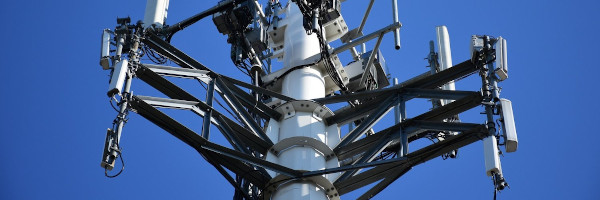Wireless Blueprint: Difference between revisions
Created page with "{{Chapter | blueprint = Wireless | sectors = Wireless | authors = David Witkowski | poc = David Witkowski | email = davidw@jointventure.org | document = 20170823-GCTC-PWSC-Pub..." |
No edit summary |
||
| (7 intermediate revisions by the same user not shown) | |||
| Line 2: | Line 2: | ||
| blueprint = Wireless | | blueprint = Wireless | ||
| sectors = Wireless | | sectors = Wireless | ||
| authors = David Witkowski | | authors = David Witkowski, Anton Batalla, Essam El-Beik, Benny Lee, Bill Pugh, Steve Wimsatt | ||
| poc = David Witkowski | | poc = David Witkowski | ||
| email = davidw@jointventure.org | | email = davidw@jointventure.org | ||
| document = 20170823-GCTC-PWSC-Public-WIFI-Blueprint-FINAL-v2.pdf | | document = 20170823-GCTC-PWSC-Public-WIFI-Blueprint-FINAL-v2.pdf | ||
| chapter = 950 | | chapter = 950 | ||
| image = WirelessChapter.jpg | |||
| summary = The purpose of this blueprint is to provide readers with a practical “how-to” guide for deploying a Public Wi-Fi system within their jurisdiction or agency. | |||
}} | }} | ||
The goals of the Global City Teams Challenge program are to bring together thought leaders and experts on a wide variety of topics relating to modern “Smart City” technologies and to have them share their knowledge and create best practices to assist those who are coming after them. The authors and contributors of this blueprint have designed, built, and managed Public Wi-Fi systems all over the United States and it is this spirit of collaboration and knowledge sharing that drives this effort forward. | |||
This is intended for readers who are interested in building Public Wi-Fi systems – particularly in outdoor | |||
and large spaces – and who would like practical and real-world advice and/or have already done so and | |||
would like to continue looking for best practices. It is intended for readers at all levels of organizational | |||
decision making and influence from technologists (e.g., engineers, security experts, and IT analysts), to | |||
finance and procurement specialists, to marketing and community development specialists, to executive | |||
staff and elected officials. | |||
=Blueprint Structure= | |||
The blueprint has been structured with a practical, modular approach in mind. That is, each chapter | |||
focuses on a specific element in the Public Wi-Fi deployment process. While each element is required to | |||
properly deploy a Public Wi-Fi system, the chapters are broad enough that readers may only need bits | |||
and pieces from each, depending on the size and scope of their projects. The chapters break down like | |||
this: | |||
*Introduction to Public Wi-Fi Use Cases | |||
*History of Public Wi-Fi | |||
*Funding and Business Models | |||
*Legal Issues | |||
*Marketing & Outreach | |||
*Procurement | |||
*Technology Strategy & Policy | |||
*Project Management | |||
*Real-World Case Studies | |||
*Appendices | |||
Throughout the blueprint there are “Key Takeaways,” “Important Questions to Ask,” and “Helpful Hints” | |||
that are meant to provide readers with the most salient and relevant points and practical, real world | |||
advice. These can be used as a quick reference guide for this interested in getting to the heart of the | |||
matter. The Appendixes feature templates, worksheets and additional resources that agencies can | |||
readily use for their own needs. The next section will discuss the highlights of the blueprint. | |||
=Highlights= | |||
'''There are many use-cases for modern Public Wi-Fi systems'''. Municipalities surveyed1 during the | |||
research of this project overwhelming indicated that social and public benefits, such as digital inclusion,2 | |||
economic development, and providing services for students were their primary objectives for Wi-Fi. | |||
However, a growing use-case includes backhaul connectivity for Internet of Things (IoT) networks. There | |||
are dozens of potential use cases for Public Wi-Fi and this paper explores many of them in depth. | |||
'''From a funding perspective''', in many examples, we found that Wi-Fi was funded as public infrastructure, | |||
in the same manner as other public infrastructure like roads and sidewalks. When agencies fund Public | |||
Wi-Fi systems directly, we term it: “The General Fund Model.” At the same time, many successful PublicPrivate Partnerships exist where cities have partnered with private sector firms to exchange assets for the deployment of Public Wi-Fi service. When this occurs, we term it: “The PPP Model.” Finally, cities | |||
both on their own and with private sector partners are starting to realize the benefits of Public Wi-Fi as a | |||
legitimate revenue source. We call this: “The Revenue Model.” '''It must be understood that no funding | |||
model is inherently better or worse''' – the decision depends on many factors specific to each agency. | |||
'''Legal Issues''' come from the regulatory landscape as well as the organizational responsibilities and that | |||
come with deploying a Public Wi-Fi system. '''Marketing & Outreach''' benefits from coordination with | |||
external partners, such as: schools, businesses, and other public sector partners. Agencies should | |||
prepare a robust social media strategy along with promoting strong word of mouth. | |||
'''Procurement is part of any project''' and this blueprint identifies four main areas to focus on: researching | |||
the industry; creating an advisory board; the approach; and the contract (pricing, vendor evaluation, and | |||
contract execution). '''Wi-Fi Technology''' has significantly improved over the years, and there are only | |||
three architectural pieces required: access points; management; and backhaul. Access points, | |||
particularly in outdoor networks, significantly benefit from mesh networking while management comes | |||
with the platform. Backhaul can be harder, but wireless technologies are emerging that are cost effective compared to fiber construction. Meanwhile, agencies must think about policies around: | |||
security, access, maintenance and support, and management and build up a firm understanding of the | |||
evolving wireless technology landscape, which is discussed in depth. | |||
'''The Project Management''' chapter is highly modular and practical. It provides many templates, | |||
worksheets, samples, and lists that can be readily adopted by an agency for a Public Wi-Fi project. This | |||
can be found in the Chapter Appendix. | |||
=Conclusion= | |||
It is our hope that readers find this blueprint to be a useful tool for understanding and advancing Public | |||
Wi-Fi projects. As smart city technologies continue to evolve, Wi-Fi will remain a key part of the solution | |||
both as a backhaul technology and as a connectivity solution for the public and municipal staff. We hope | |||
that the blueprint offers useful, practical advice and that our case studies inspire you. Good luck in your | |||
future Public Wi-Fi endeavors! | |||
Latest revision as of 20:07, April 10, 2022
- Authors
The purpose of this blueprint is to provide readers with a practical “how-to” guide for deploying a Public Wi-Fi system within their jurisdiction or agency.
The goals of the Global City Teams Challenge program are to bring together thought leaders and experts on a wide variety of topics relating to modern “Smart City” technologies and to have them share their knowledge and create best practices to assist those who are coming after them. The authors and contributors of this blueprint have designed, built, and managed Public Wi-Fi systems all over the United States and it is this spirit of collaboration and knowledge sharing that drives this effort forward.
This is intended for readers who are interested in building Public Wi-Fi systems – particularly in outdoor and large spaces – and who would like practical and real-world advice and/or have already done so and would like to continue looking for best practices. It is intended for readers at all levels of organizational decision making and influence from technologists (e.g., engineers, security experts, and IT analysts), to finance and procurement specialists, to marketing and community development specialists, to executive staff and elected officials.
Blueprint Structure
The blueprint has been structured with a practical, modular approach in mind. That is, each chapter focuses on a specific element in the Public Wi-Fi deployment process. While each element is required to properly deploy a Public Wi-Fi system, the chapters are broad enough that readers may only need bits and pieces from each, depending on the size and scope of their projects. The chapters break down like this:
- Introduction to Public Wi-Fi Use Cases
- History of Public Wi-Fi
- Funding and Business Models
- Legal Issues
- Marketing & Outreach
- Procurement
- Technology Strategy & Policy
- Project Management
- Real-World Case Studies
- Appendices
Throughout the blueprint there are “Key Takeaways,” “Important Questions to Ask,” and “Helpful Hints” that are meant to provide readers with the most salient and relevant points and practical, real world advice. These can be used as a quick reference guide for this interested in getting to the heart of the matter. The Appendixes feature templates, worksheets and additional resources that agencies can readily use for their own needs. The next section will discuss the highlights of the blueprint.
Highlights
There are many use-cases for modern Public Wi-Fi systems. Municipalities surveyed1 during the research of this project overwhelming indicated that social and public benefits, such as digital inclusion,2 economic development, and providing services for students were their primary objectives for Wi-Fi. However, a growing use-case includes backhaul connectivity for Internet of Things (IoT) networks. There are dozens of potential use cases for Public Wi-Fi and this paper explores many of them in depth.
From a funding perspective, in many examples, we found that Wi-Fi was funded as public infrastructure, in the same manner as other public infrastructure like roads and sidewalks. When agencies fund Public Wi-Fi systems directly, we term it: “The General Fund Model.” At the same time, many successful PublicPrivate Partnerships exist where cities have partnered with private sector firms to exchange assets for the deployment of Public Wi-Fi service. When this occurs, we term it: “The PPP Model.” Finally, cities both on their own and with private sector partners are starting to realize the benefits of Public Wi-Fi as a legitimate revenue source. We call this: “The Revenue Model.” It must be understood that no funding model is inherently better or worse – the decision depends on many factors specific to each agency.
Legal Issues come from the regulatory landscape as well as the organizational responsibilities and that come with deploying a Public Wi-Fi system. Marketing & Outreach benefits from coordination with external partners, such as: schools, businesses, and other public sector partners. Agencies should prepare a robust social media strategy along with promoting strong word of mouth.
Procurement is part of any project and this blueprint identifies four main areas to focus on: researching the industry; creating an advisory board; the approach; and the contract (pricing, vendor evaluation, and contract execution). Wi-Fi Technology has significantly improved over the years, and there are only three architectural pieces required: access points; management; and backhaul. Access points, particularly in outdoor networks, significantly benefit from mesh networking while management comes with the platform. Backhaul can be harder, but wireless technologies are emerging that are cost effective compared to fiber construction. Meanwhile, agencies must think about policies around: security, access, maintenance and support, and management and build up a firm understanding of the evolving wireless technology landscape, which is discussed in depth.
The Project Management chapter is highly modular and practical. It provides many templates, worksheets, samples, and lists that can be readily adopted by an agency for a Public Wi-Fi project. This can be found in the Chapter Appendix.
Conclusion
It is our hope that readers find this blueprint to be a useful tool for understanding and advancing Public Wi-Fi projects. As smart city technologies continue to evolve, Wi-Fi will remain a key part of the solution both as a backhaul technology and as a connectivity solution for the public and municipal staff. We hope that the blueprint offers useful, practical advice and that our case studies inspire you. Good luck in your future Public Wi-Fi endeavors!






